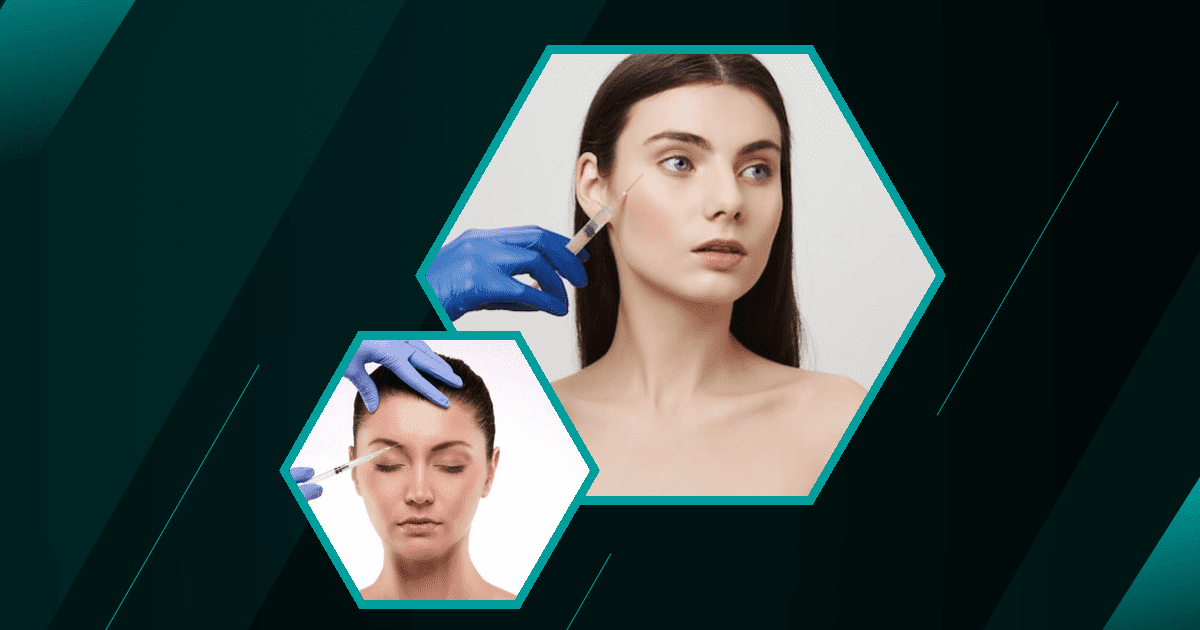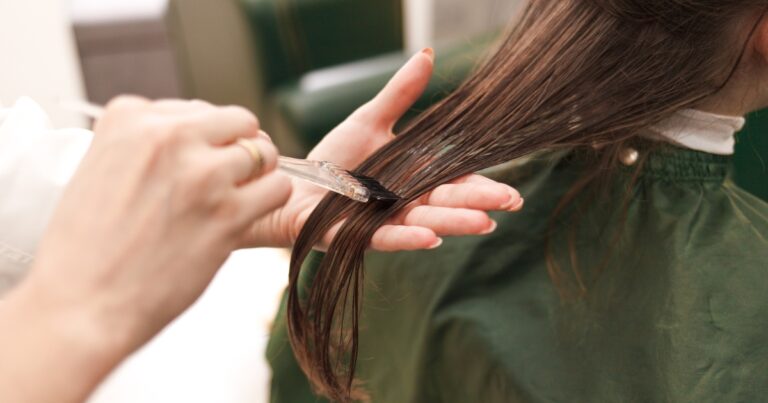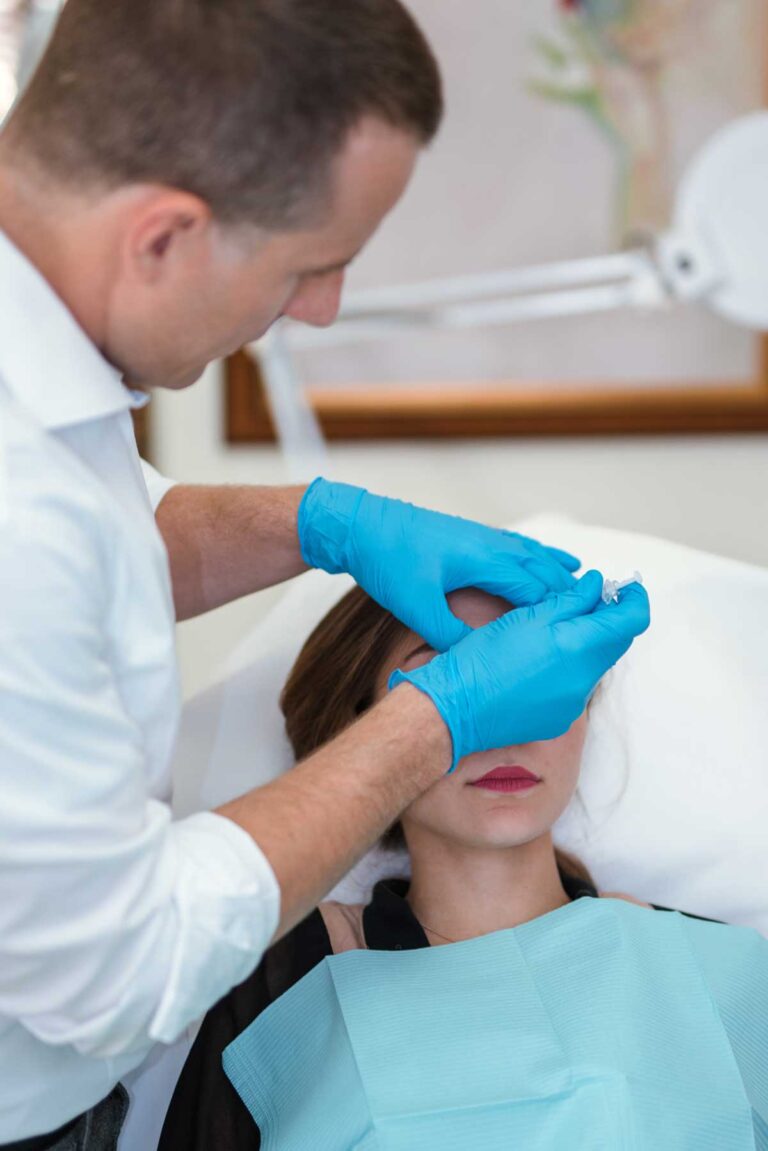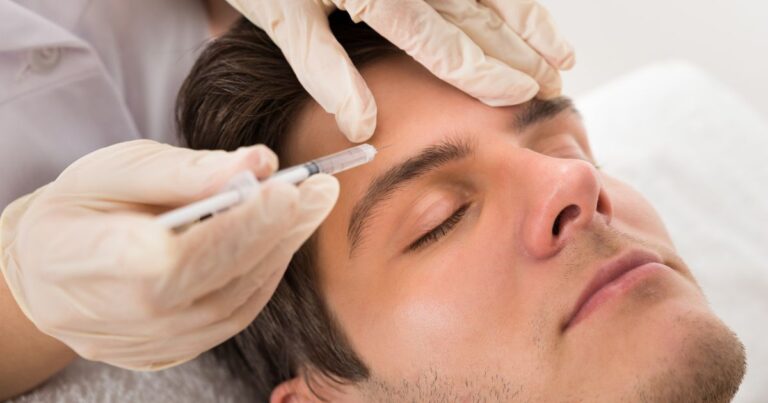Ptosis, commonly known as droopy eyelid, is a condition that can affect one’s vision and appearance. Many people wonder, “Can Botox fix ptosis?” Botox, a popular cosmetic treatment, is often considered for its potential to address this issue. In this guide, we will explore how Botox can be used to treat ptosis, its effectiveness, and other related aspects.
Understanding Ptosis and Its Causes
Ptosis occurs when the upper eyelid droops over the eye. This can be due to aging, injury, or congenital factors. The condition can affect one or both eyes and may lead to vision problems if severe. Understanding the root causes of ptosis is crucial for determining the appropriate treatment.
- Aging : As we age, the muscles responsible for lifting the eyelids can weaken, leading to drooping.
- Injury : Trauma to the eye or surrounding areas can damage the muscles or nerves, causing ptosis.
- Congenital Factors : Some individuals are born with ptosis due to developmental issues with the eyelid muscles.
How Botox Works for Eyelid Drooping
Botox, or botulinum toxin, is a neurotoxin that temporarily paralyzes muscles. When injected into specific areas, it can help lift the eyelid by relaxing the muscles that cause drooping. This treatment is minimally invasive and can be an alternative to surgery for some patients.
- Muscle Relaxation : Botox targets the muscles responsible for eyelid drooping, allowing them to relax and lift the eyelid.
- Non-Surgical : Unlike surgical options, Botox is a non-invasive procedure with minimal downtime.
- Temporary Solution : The effects of Botox are temporary, typically lasting a few months before requiring re-treatment.
Effectiveness of Botox for Ptosis Treatment
The effectiveness of Botox for ptosis varies depending on the severity of the condition and the individual’s response to treatment. While Botox can provide temporary relief for mild to moderate ptosis, it may not be suitable for severe cases.
- Mild to Moderate Ptosis : Botox is most effective for patients with mild to moderate eyelid drooping.
- Temporary Results : Patients may need regular treatments to maintain the desired effect.
- Not Suitable for Severe Cases : Severe ptosis may require surgical intervention for effective correction.
Botulinum Toxin Injections for Eyelid Lift
The Procedure and Its Benefits
Botulinum toxin injections for eyelid lift involve a simple procedure performed by a qualified professional. The benefits of this treatment include a quick recovery time and minimal discomfort.
Book A Consultation With Dr Tarek Bayazid
Top-rated Plastic Surgeon For Botox in Dubai
Installment Plan Available
Botox Facial Rejuvenation uses tiny injections to smooth wrinkles
it helps people look younger without surgery or recovery time
- Quick Procedure : The injection process is typically completed within minutes.
- Minimal Discomfort : Most patients experience little to no pain during the procedure.
- Fast Recovery : Patients can resume normal activities shortly after treatment.
Duration of Results
The duration of Botox results for ptosis can vary based on individual factors. On average, patients can expect the effects to last for several months.
- Average Duration : Botox effects typically last 3-4 months.
- Individual Variation : Factors such as metabolism and lifestyle can affect how long the results last.
- Maintenance Treatments : Regular follow-up treatments are necessary to maintain the desired eyelid position.
Comparing Botox to Other Ptosis Treatments
Surgical Options for Ptosis Correction
Surgical options for ptosis correction are often considered for more severe cases. These procedures involve tightening or repositioning the eyelid muscles to achieve a more permanent solution.
- Blepharoplasty : A common surgical procedure that removes excess skin and tightens the eyelid muscles.
- Levator Resection : Involves shortening the levator muscle to lift the eyelid.
- Frontalis Sling : Uses a sling to connect the eyelid to the forehead muscles for better lift.
Non-Surgical Alternatives
In addition to Botox, there are other non-surgical alternatives for ptosis treatment. These options may be suitable for patients seeking less invasive solutions.
- Ptosis Crutches : Special eyeglasses with a crutch to support the drooping eyelid.
- Eye Exercises : Certain exercises may help strengthen the eyelid muscles.
- Topical Treatments : Some creams and serums claim to improve eyelid appearance.
Cost Comparison of Ptosis Treatments
The cost of ptosis treatments can vary widely depending on the method chosen. It’s important to consider both the initial cost and any ongoing expenses.
Treatment Type | Average Cost | Duration of Results |
Botox Injections | 66/session | 3-4 months |
Blepharoplasty | ,000-,000 | Permanent |
Ptosis Crutches | 0-00 | Ongoing |
Consultation Process with Dr. Tarek
Consulting with a qualified professional like Dr. Tarek is essential for determining the best treatment plan for ptosis. During the consultation, patients can discuss their concerns and explore available options.
- Comprehensive Evaluation : Dr. Tarek will assess the severity of ptosis and recommend appropriate treatments.
- Personalized Treatment Plan : A tailored plan will be created based on the patient’s needs and goals.
- Informed Decision-Making : Patients will receive detailed information to make an informed choice.
Recovery and Aftercare for Botox Ptosis Treatment
Post-Treatment Care Instructions
Proper aftercare is crucial for achieving the best results from Botox ptosis treatment. Following post-treatment instructions can help minimize side effects and enhance outcomes.
- Avoid Rubbing Eyes : Refrain from touching or rubbing the treated area.
- Stay Upright : Keep the head elevated for several hours post-treatment.
- Limit Physical Activity : Avoid strenuous activities for at least 24 hours.
Expected Timeline for Results
Understanding the timeline for Botox results can help patients set realistic expectations. While some effects may be noticeable immediately, full results typically take time to develop.
- Initial Effects : Some improvement may be seen within a few days.
- Full Results : Maximum results are usually visible within 1-2 weeks.
- Duration : Effects last for several months before re-treatment is needed.
Follow-up Appointments and Maintenance
Regular follow-up appointments are important for maintaining the desired results of Botox ptosis treatment. These visits allow for adjustments and ongoing care.
- Scheduled Follow-ups : Regular appointments help monitor progress and plan future treatments.
- Adjustments : Dosage or injection sites may be adjusted based on individual response.
- Long-term Maintenance : Consistent treatments are necessary to sustain results.
Stats:
1. According to a study published in the Journal of Ophthalmology, Botox treatment for ptosis showed a success rate of 85% in patients with mild to moderate eyelid drooping. (Source: https://www.ncbi.nlm.nih.gov/pmc/articles/PMC7352484/)
2. The American Society of Plastic Surgeons reports that the average cost of Botox treatment in 2020 was 66 per session. (Source: https://www.plasticsurgery.org/cosmetic-procedures/botulinum-toxin/cost)
3. A clinical trial conducted by the National Eye Institute found that 92% of patients experienced improvement in ptosis symptoms after Botox treatment. (Source: https://clinicaltrials.gov/ct2/show/NCT039477
FAQ’s
What causes Botox-related ptosis, and can it be fixed?
Botox-related ptosis usually occurs when the Botox solution accidentally migrates to the muscles that lift the eyelid, causing temporary drooping. This side effect can sometimes be improved with prescription eye drops that stimulate the affected muscle, although it usually resolves on its own within a few weeks.
How long does Botox-induced ptosis last?
Botox-induced ptosis is temporary and typically lasts a few weeks to a few months, depending on individual factors and the amount of Botox used. Generally, as the Botox wears off, the ptosis resolves on its own.
Are there alternatives to Botox for treating drooping eyelids?
Yes, surgical procedures like blepharoplasty (eyelid surgery) or ptosis repair are common solutions for long-term correction of drooping eyelids. In some cases, certain prescription eye drops may also help with mild ptosis, depending on the underlying cause.
How can I prevent ptosis when getting Botox near the eyes?
To minimize the risk of ptosis, it’s essential to work with a highly qualified, experienced injector who understands facial anatomy and Botox application. Proper injection technique, avoiding high doses, and strategically placing injections can help reduce the chances of this side effect.







